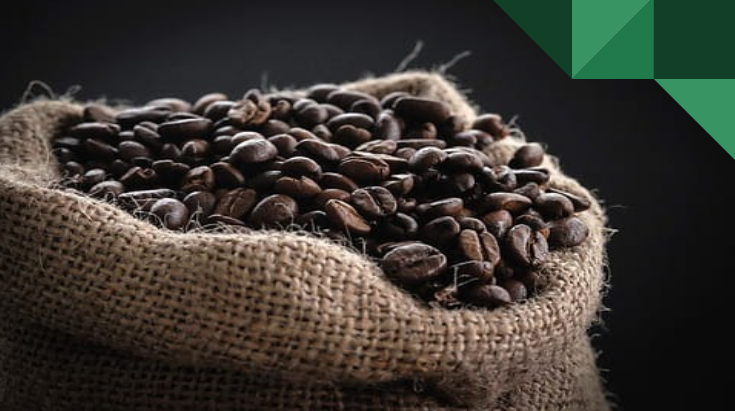Multidisciplinary Senior Design Project
Valorization of Coffee Wastes into Biochar
In many households, the first thing many people do in the morning is make a cup of coffee to start their day. According to the National Coffee Association, Americans drink nearly 587 million cups of coffee every day! With each cup containing about 70 beans, and only 6% of the original coffee beans actually used, there is a lot of waste occurring. Most of the bean after roasting, grinding, and brewing is discarded into dumpsters or landfills, which generates harmful greenhouse gases and creating thousands of pounds of coffee waste. What can be done with all this waste?
Before this question is answered, we must first understand what coffee waste is. Coffee starts as a green bean which is then roasted until it results in the well-known brown coffee bean that is used in your daily coffee, but also a papery skin that falls from the bean during the roasting process, called chaff. This chaff is often bagged and thrown away, generating our first major form of coffee waste. The brown bean is then shipped, ground, and brewed into a regular cup of coffee. After brewing, the wet grounds, referred to as Spent Coffee Grounds or SCG, are thrown away, creating the second major form of coffee waste.
This is where our team comes in!
Our goal is to help divert coffee wastes away from landfills and towards a process that valorizes them. One way we're doing that is by supporting and investigating the production of coffee biochar. Biochar is a charcoal-like product made by burning organic material at high temperatures with little oxygen, which is a process called pyrolysis. Biochar can be made from almost any organic material, and different types are used in many different applications such as agricultural practices, cements and structural applications, 3D printing materials or other plastics, and more. As coffee biochar has never been done before, our project is combining chaff and SCG to create different coffee biochar samples, and determining which applications coffee biochar would be best suited for while solving the problem of diverting the coffee wastes. Our team is also looking into logistics, which includes how solving how we can get all of this SCG and chaff to a refinery machine to actually make biochar in real production. We use a simulation software called SIMIO to map out this process. Using data from different coffee roasters and distributors, the model can quickly run a real-time situation to help predict costs, times, and performance, without actually having to build the system in real life. This helps the team understand how to create a sustainable, production-level system to support the creation of coffee biochar. Using the model results as a guide, we can help coffee producers understand how to best divert coffee wastes and to explore new ways for making a more positive impact on the environment.
Coffee Beans - The beginning of Coffee Biochar
Biogenic Refinery from Biomass Controls - Used to create coffee biochar from coffee wastes
High-temperature microwave furnace in the Golisano Institute of Sustainability - Used as replacement to create coffee biochar
Roaster and Cafe to Refinery - Simio Logistics Model
Refinery Operations - Simio Logistics Model
Combined Model - Simio Logistics Model
Chaff and Coffee Biochar Samples
Team Members
Annamarie D'Aurizio,
Torie Adler,
Olivia Crouse,
Laura Discavage,
Sivan Moyal,
Sarah Brownell










